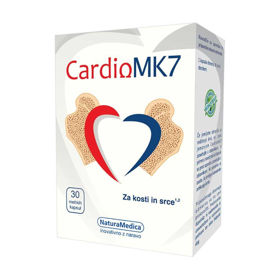Customer question:
Can a low heart rate be dangerous? Anonymous customer's question
Pharmacist's answer:
A low heart rate (bradycardia) is not always dangerous, significantly if it is not associated with other health problems and does not cause specific symptoms. In some cases, a low heart rate is a normal physiological response of the body, especially in people who are physically active and in good physical condition. Bradycardia in athletes or physically fit individuals is usually a physiological adaptation to increased cardiac output. However, a low heart rate can become a concern if it causes harmful symptoms or is associated with other problems.
Symptoms of bradycardia may include the following symptoms:
- dizziness or vertigo
- weakness or tiredness
- fainting
- heavy breathing
- chest pains
A low heart rate can be dangerous if it is associated with severe heart conditions such as heart valve disease, heart failure, or heart attack. If you notice symptoms of bradycardia or are concerned about your heart rate, talk to your doctor about the condition.
What is considered a low heart rate?
Usually, a low heart rate is called bradycardia. The exact boundary between average and low heart rate is not strictly defined, as average heart rate can vary between individuals. Bradycardia is classically considered when the heart rate falls below 60 beats per minute. However, the value of the heart rate is considered not only independently but also in the context of the individual's clinical symptoms and health status. A low heart rate is not always a cause for concern, especially if the person has no symptoms and is not associated with other health problems.
Physiological causes of a low heart rate include:
- Sports fitness: very physically active individuals, especially athletes, often have a lower resting heart rate.
- Age: Older people often have a decreased heart rate.
- Vagus tone: Increased tone of the vagus nerve can cause a decrease in heart rate, which can happen during deep breathing, meditation, or simply as a reflex, such as when immersing your face in cold water.
Pathological causes of low heart rate include:
- Heart disease: heart valve disease, heart failure, or heart muscle disease can cause bradycardia.
- Defects in the heart's conduction system: Problems with the heart's conduction system, which transmits electrical impulses, can lead to a slow heartbeat.
- Certain medications: Some medications, especially some beta-blockers, can cause the heart rate to decrease.
If a person has a low heart rate and symptoms such as dizziness, weakness, fatigue, or difficulty breathing are present, it is essential to consult a doctor. The doctor will perform an assessment, determine the causes, and determine if treatment is necessary.
What are the heart rate levels?
The heart rate (pulse) is measured in beats per minute (bpm). It depends on several factors, including health status, age, physical fitness, emotional state, amount of physical activity, and other influences. Below are approximate average resting heart rate ranges:
- Babies (0-1 year): 120-160 bpm
- Children (1-10 years): 70-120 bpm
- Children and teenagers (10-17 years): 60-100 bpm
- Adults (over 18): 60-100 bpm
These values are general guidelines and may vary and change. It is important to emphasize that individual differences in heart rate are entirely normal. Emotional stress, physical activity, environmental temperature, caffeine, medications, and other factors can affect heart rate. For a more accurate assessment of one's heart activity and its changes, measuring the pulse at rest and in various situations is recommended regularly.
Interesting reading: Bradycardia
Interesting reading: Normal pulse













